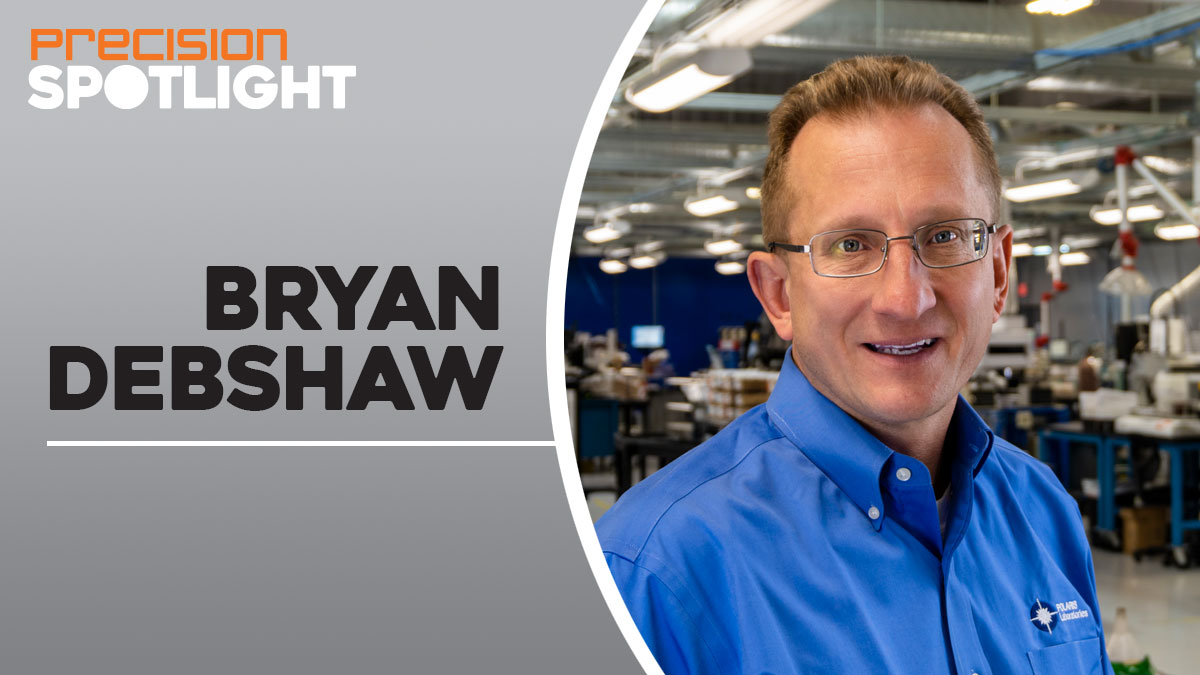Welcome to Precision Spotlight, our fresh Q&A series where we shine a light on industry professionals, delving into their insights and experiences in the world of lubrication. In this Precision Spotlight we interview one of our Editorial Advisory Board Members, Bryan Debshaw.
What is a regular day like for you in your role?
Every day is different; I get to bounce around our Indy headquarters with laboratory operations, finance, accounting, and human resources, to meeting with customers. I enjoy meeting with customers the most; it is always great to get out to the customer’s site and see the solutions they are putting in place to improve equipment reliability.
If you had a superpower, what would that be?
If I had a superpower, I would want speed. The equipment reliability and maintenance space is incredibly slow to change, and, with speed, I could get to places faster and help initiate more change in the industry. So many opportunities to improve equipment reliability are lost as customers struggle with putting out fires rather than doing the right things to prevent equipment failure in the first place.
What is your area of expertise within the field of lubrication?
My expertise lies in continuous improvement and implementing behavioral and organizational change. I have repeatedly seen people failing, not for lack of technical knowledge but for the inability to facilitate behavioral change. The simple concepts of driving compliance, taking action, and doing root cause analysis are often lost.
What best prepared you for your career journey?
I was introduced to equipment maintenance and reliability during my time in the Air Force, working on F4s and F16s. Looking back, I did not appreciate it then, but we had all the elements of a successful reliability program. After 10 years in maintenance, I received my commission as an officer. I had the opportunity to learn more about leadership and organizational change.
What has been the most important innovation in lubrication in recent years?
Telematics and cloud computing have open opportunities to improve equipment reliability and lubrication. It requires good data for decision-making; even tools like AI are only as good as the data inputs. Telematics and everything being a connected device now allows us to capture so much more information than was ever possible before.
That, combined with cloud computing and the ability to store and aggregate massive amounts of data, will allow for even better decision-making. Often the challenge in doing root cause analysis is gathering enough data to understand what happens. Today the customer has access to much more data than ever before.
How did you get started in the lubrication industry?
In the beginning, the only thing I knew about oil analysis was every time the airplane flew, we pulled an oil sample and would have the results back within an hour. It was not until I met the founders of POLARIS Laboratories® that I learned the commercial applications of what we did in the military, and that began my journey of learning lubrication.
What are some emerging trends in the lubrication industry that you find most exciting?
Sensor technology and the ability to utilize multiple data sources from different condition monitoring technologies together. We have been experimenting with this for years at POLARIS Laboratories®. Through our API integration capabilities with DataConnect, we have developed integrated solutions for our customers.
If there was only one thing you could change about our industry, what would that be, and how would you do that?
The industry needs to learn to change faster; sometimes, lubrication and maintenance practices move at the speed of molasses. More staffing, training, and resources are required to keep up with improvement opportunities. Often, equipment fails needlessly, and opportunities for improvement are missed.
Can you share a particular challenge and how you overcame it?
In 2017 I signed up to run the Tahoe200; this was a bit on the crazy side as I have never run anything longer than a marathon. I had one year to figure out how to do this and put a plan together. I started signing up for other Ultra races, first a 50 mile, then a 100, and 2 weeks later, a 50 miler, and then I realized that I needed a plan to prevent blisters to succeed in the Taho200 mile run.
Conventional wisdom was to use athletic tape and tape the areas on your feet that got blisters. I needed clarification because the tape only added layers to the problem and did not lower the coefficient of friction. So with some research, I found Rungoo – a very thick and nasty lubricant for your feet; it is waterproof and does not absorb into the skin. This made me think about what we tell our customers, keep your equipment clean, dry, and well-lubricated.
I took the same advice for my feet; I ran with gaiters to keep the rocks out, stopped every 40 miles to thoroughly clean my feet, and kept them well lubricated. I finished the race free of blisters, but I lost most of my toenails, but that was another problem I needed to solve for my next race.
What are some emerging trends in the lubrication industry that you find most exciting?
The importance of used grease testing. Grease testing offers the opportunity to improve the reliability of greased components and optimize the amount of grease used.
How has the industry evolved since you began your career?
When we started, customers were manually filling out paper forms and getting back paper reports. Today, everything should be digital, from submitting the sample to receiving and interpreting the report to connecting all maintenance data in one system.
How do environmental concerns factor into your work, and what steps are you taking to address them?
Through our testing capabilities and the services we provide, we help our customers reduce their carbon footprint. I think this really gets missed by many companies in the industry. We help optimize lubricant drain intervals, resulting in companies using less lubricant. We also help extend equipment life, reducing carbon emissions from making new equipment.
What is your approach to ensuring efficient and effective lubrication in various applications?
Establish standard work, measure standard work, make results visible, identify the gap, and use problem-solving tools to reduce the gap. Small and incremental change can have a significant impact – the continuous improvement journey and the reliability journey go hand in hand.
Can you share an example of a successful project you’ve worked on and what made it successful?
We started our lean journey more than 10 years ago and are still learning daily. Our focus on continuous improvement and employee engagement through problem-solving has been tremendous. I greatly underestimated the work it would take to change company culture, but it has been tremendously rewarding.
Tell us one of your most memorable experiences working with a customer.
We welcomed over 140 customers during last year’s Reliability Summit, our annual maintenance and reliability conference. Seeing so many customers sharing information, learning, and working to improve their programs was great.








